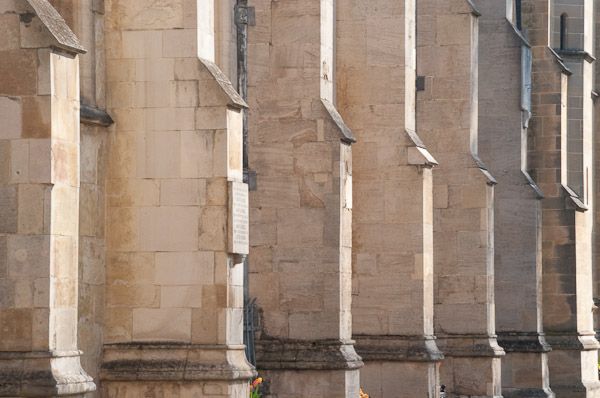Illustrated Dictionary of British Churches - Buttress Definition
History and Architecture
- Aisle
- Altar
- Ambulatory
- Angel Roof
- Apophyge
- Apse
- Arcade
- Arch
- Archivolt
- Base
- Battlement
- Bay
- Belfry
- Bell Tower
- Bellcote
- Bench End
- Board Bell Turret
- Body
- Boss
- Box pew
- Bracket
- Broach Spire
- Buttress
- Canopy
- Capital
- Cartouche
- Chancel
- Chancel Arch
- Chancel Screen
- Chantry
- Chapel
- Chapter House
- Choir
- Clerestory
- Cloister
- Communion Rail
- Compound Column
- Consecration Cross
- Corbel Head
- Crossing
- Crypt
- Early English
- Easter Sepulchre
- Effigy
- Fan Vaulting
- Font
- Font cover
- Funerary Helm
- Gallery
- Gargoyle
- Gothic
- Green Man
- Grotesque
- Hatchment
- Herringbone
- Hogback Tomb
- Holy Water Stoup
- Hunky Punk
- Jesse Window
- Kempe Window
- Lady Chapel
- Lancet
- Lectern
- Lierne
- Lych Gate
- Misericord
- Monumental Brass
- Mullion
- Nave
- Ogee
- Organ
- Parclose Screen
- Parish Chest
- Pendant
- Perpendicular Gothic
- Pew
- Pinnacle
- Piscina
- Poor Box
- Poppy Head
- Porch
- Priest's Door
- Pulpit
- Purbeck Marble
- Quire
- Rebus
- Reliquary
- Reredos
- Retable
- Romanesque
- Rood
- Rood Loft
- Rood screen
- Rood Stair
- Rose Window
- Round Tower
- Sanctuary
- Sanctuary Knocker
- Saxon Period
- Scratch Dial
- Sedilia
- Spire
- Statue Niche
- Stoup
- Tomb Recess
- Tracery
- Transept
- Triforium
- Tympanum
- Undercroft
- Vaulting
- Victorian Gothic
- Wall Monument
- Wall Painting
- Wheel Window
Buttress
A generic term used to describe a projecting support, usually to a wall. Before buttresses came into use, walls had to be very thick to support the weight of a church and its roof. Buttress design allowed walls to be pierced with increasingly larger windows during thew medieval period. The 'thrust' of weight from the roof is the main reason why buttresses were used in church architecture. Early churches with wooden roofs did not need the extra support provided by a buttress because the thrust of the roof was partially countered by tie and collar beam construction techniques. However, the increasing use of stone vaulting during the development of Gothic architecture meant that various forms of buttresses were needed.
Saxon and Norman buttresses are often wide but do not project far from the line of the wall, as the sheer bulk of those walls meant that not much extra support was needed. Gothic architecture developed thinner walls, pierced with wide windows, so new forms of buttresses were needed, especially ones that projected well away from the wall to better distribute weight.
During the Decorated phase of Gothic (roughly 14th century) buttresses rose in clearly defined stages of diminishing height, often capped by a decorative pinnacle. The most extreme of these Gothic supports was the flying buttress, a slender arch from wall to ground. These flying buttresses were often topped by a large pinnacle, which served not only a decorative function, but more practically provided extra weight to transfer the thrust down to the ground.
Main types of church buttresses:
- Angle buttress - a pair of buttresses meeting at a 90 degree angle at a corner. Most common from the 13th century onward.
- Clasping buttress - a large square buttress encasing a corner, most often used on towers or porches.
- Diagonal buttress - a buttress set at a diagonal to a corner. Most often seen after the 14th century.
- Flying buttress - as described above, most common from the 15th century onwards.
- Setback buttress - like the angle buttress save that the two buttresses are set back, with the building corner visible between them.












